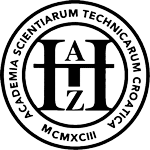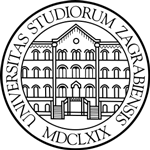Color differences vision test
Abstract
When different observers match the same color, using the same matching stimuli, it is found that there are slight differences in the amounts that they require to make up a match. The interpretation of color differences plays an important role in some cases, for example in color evaluation during print approval, when the designer has high requirements regarding the accuracy of color reproduction, for medical purposes, in the automotive or other industries. There are several tests for determining who is the best candidate for evaluating colors. One of the most convenient tests is the Farnsworth-Munsell 100 Hue Test. The main disadvantage of this and similar tests is that one can't straightforwardly connect perceptual interpretation of color differences with objective results done with instrumental measurement of color differences. The paper proposed a way to express in ΔE* units the results of testing the subject's sensitivity to color differences, and in that way to determine as precisely as possible the difference in color that an individual subject can perceive in some part of the colored space. By calculating the average value of ΔE* of the respondents for certain parts of the color space, a conclusion can be drawn about the general sensitivity of the respondents to differences in colors.

This work is licensed under a Creative Commons Attribution-NonCommercial-NoDerivatives 4.0 International License.






